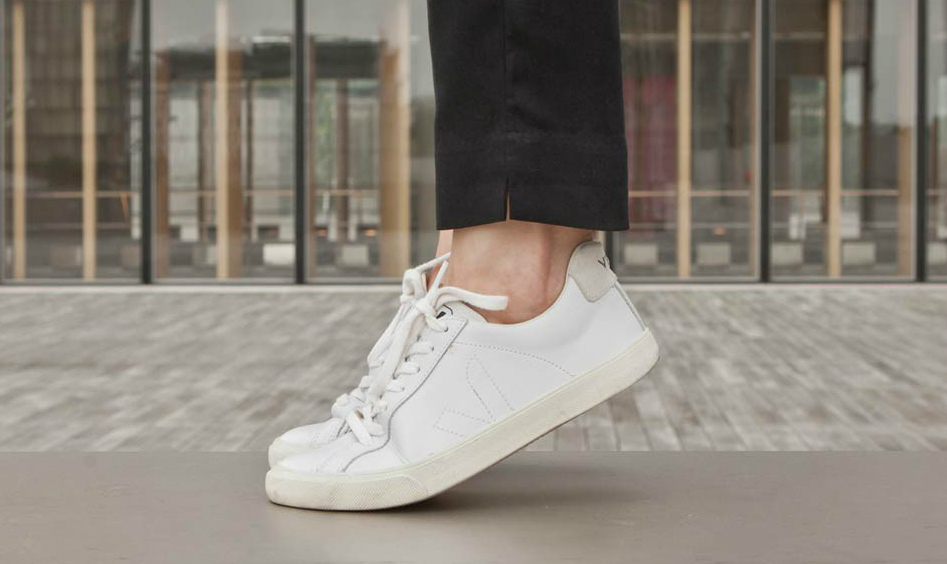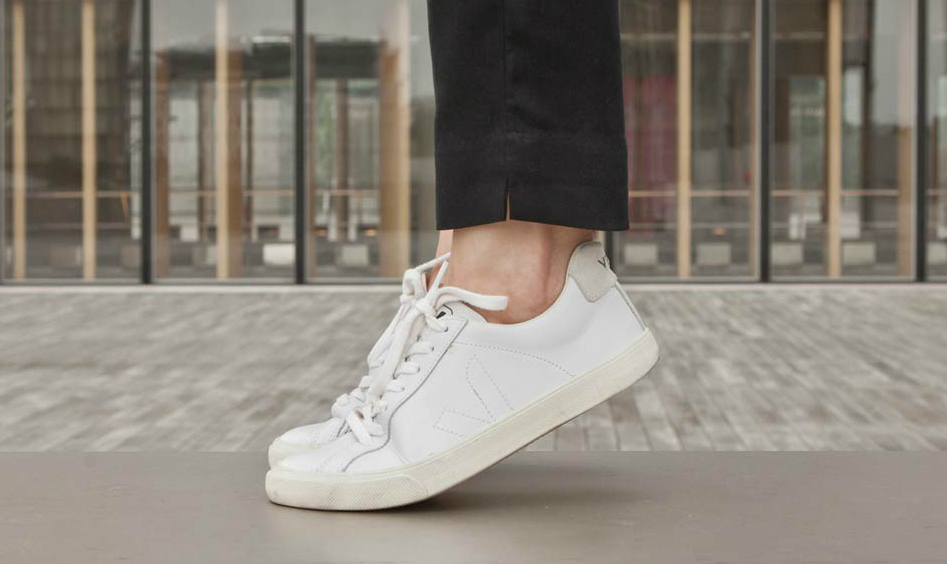 (Photo: A pair of white leather Veja sneakers. Credit: Veja)
(Photo: A pair of white leather Veja sneakers. Credit: Veja)
From raw materials through manufacturing all the way to retail, the apparel industry continued to be scrutinized for sustainability in 2018. Practices that might have been overlooked in the past — using polluting chemicals, trashing garments — made headlines and prompted brands to make changes.
Over the summer, the Ellen MacArthur Foundation convened fashion industry partners including Gap, Nike, and Stella McCartney in a new Make Fashion Circular initiative. Funded by C&A Foundation and Walmart Foundation, participants agreed to create business models that keep clothes in use, utilize safe and renewable materials, and develop solutions for turning used clothes into new ones.
With those principles in mind, Environmental Leader takes a closer look at the ways that companies large and small worked toward sustainable apparel this year.
Raw Materials
One of the biggest challenges the apparel industry faces with materials is waste, Anita Chester, head of sustainable raw materials at C&A Foundation, told Environmental Leader. “Three-quarters of all used material processed along the fashion value chain are lost in landfills,” she said. “Less than 1% of all materials in clothes are recycled into new garments.”
Companies that switch to more responsible sourcing practices, including shifting to sustainable raw materials, are future-proofing their business, Chester said.
In March, textile manufacturer Ramblers Way announced a Cradle to Cradle Certified organic wool clothing line. Hugo Boss set targets for increasing the amount of sustainable cotton sourced and joined the 2020 Circular Fashion System Commitment to promote a closed material cycle in the textile industry. This fall, The North Face expanded its Cali Wool Collection made from wool produced in California using regenerative agriculture practices.
Recycling and Upcycling
Companies also emphasized recycling and upcycling materials. Levi’s and Outerknown teamed up on a new clothing line from recycled cotton that uses Levi’s Wellthread process. In July, Adidas committed to eliminating the use of virgin plastic for manufacturing by 2024. This fall, The North Face relaunched their line of ThermoBall jackets with recycled polyester fabric and recycled insulation.
French sneaker maker Veja upcycles tilapia skins into “fish leather” material. The company also makes unique fabrics from used PET plastic and cotton. “Our recycled materials give household waste a second life, and allow us to create a range of fabrics according to season and use,” Veja’s cofounders say.
Dyeing and Finishing
Dyeing and finishing can be some of the most chemical-laden, polluting stages in apparel production. At the same time, apparel brands face pressure to keep costs down.
“Price competition is fierce, and profits are shrinking thanks to volatile raw material costs and rising wages,” Melody M. Bomgardner wrote in an article for Chemical & Engineering News this year. “Despite public commitments by apparel brands to become more sustainable, suppliers contacted by C&EN say their customers will not buy anything that could raise the cost of a finished garment by as little as a penny.”
The time is ripe for new approaches that save money and avoid devastating environmental effects. Dutch denim-maker G-Star Raw worked with Dystar and Artistic Milliners on indigo technology that uses 70% less chemicals compared to conventional indigo dyeing.
Levi Strauss & Co. piloted an operating model called Project Future-Led Execution (Project FLX) in 2018 that shortens the time it takes jeans to reach the market and cuts chemicals from the finishing process by using a laser-based system.
Recommerce
Recommerce gained traction as an approach to sustainable apparel. VF Corporation, whose brands include brands include The North Face, Timberland, Eagle Creek, and Vans, has been moving toward a circular business model. Letitia Webster, VF Corporation’s vice president of global corporate sustainability, spoke to Environmental Leader about the challenges involved in that transition.
“We’re talking to our distribution center leaders and saying, ‘Can you set up an area that can take these products back, store them, log them, take pictures of them so we can get them up on an e-commerce site?’”
Over the summer, a pilot program called The North Face Renewed began selling refurbished apparel online. These products come from the company’s distribution center, get professionally repaired, cleaned with a closed-loop water-saving process, and quality checked before being photographed and sold online.
“We are furthering our sustainability goals without sacrificing durability or technical standards. Ultimately, as we work to scale Renewed, we will be proving a larger, circular model for the industry,” said James Rogers, director of sustainability at The North Face.
We are currently accepting submissions for the 2019 Environmental Leader Awards. Learn more and submit a project or product here.

